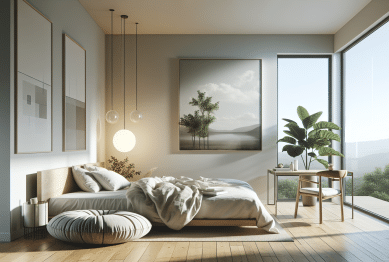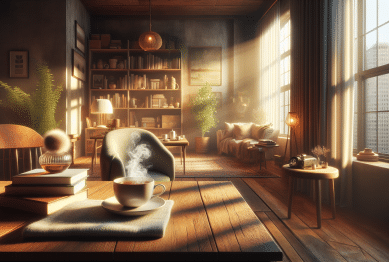Unlock a new sense of balance with self care rituals designed for anyone eager to rejuvenate their lifestyle. Explore mindful routines, wellness habits, and creative expressions that boost mood and energy. This guide helps you discover practical ways to infuse joy and purpose into your daily rhythm.
Understanding the Value of Self Care Rituals
Many people seek greater life satisfaction by building self care rituals into their routines. These practices address needs beyond basic health, focusing on emotional, mental, and spiritual wellbeing. A well-crafted self care ritual can ground a person, offering solace during high-stress periods or simply bringing welcome moments of joy. Incorporating intentional habits—such as meditation, journaling, or a morning walk—often leaves individuals feeling recharged and more resilient throughout the day. The process is highly personal: one person’s meditation is another’s creative pursuit. By exploring various rituals, one can discover what fits best, allowing self care to transform from a buzzword into a lived experience. When practiced regularly, these rituals encourage a deeper connection to one’s own needs and goals, supporting a sustainable sense of wellbeing.
Research highlights the profound impact that small, consistent self care activities can have on stress reduction and emotional balance. Engaging in gentle movement, mindful breathing, or savoring a nourishing meal provides pockets of calm that ripple through the entire day. These rituals are not reserved for luxury spas or vacation retreats—they are meant to be accessible in ordinary settings, requiring only intention and consistency. Science supports that such daily moments encourage resilience, foster positive thinking, and help buffer against the negative effects of chronic stress (Source: https://www.ncbi.nlm.nih.gov/pmc/articles/PMC5796020/). Ultimately, turning self care into a routine can create a safety net, helping individuals bounce back from everyday challenges with greater ease.
Making self care a daily ritual also fosters a greater sense of self-awareness. Pausing to check in with emotional, mental, or physical needs can prevent feelings of overwhelm before they spiral out of control. This kind of proactive attention is especially valuable in fast-paced environments where burnout is all too common. Beyond personal benefits, self care rituals often ripple into relationships as well, nurturing more patience, kindness, and compassion in daily interactions. Over time, consistent commitment to self care can shape a person’s identity, reinforcing a lifestyle grounded in intention and fulfillment.
Designing a Personalized Wellness Routine
Designing a wellness routine that genuinely supports wellbeing requires experimentation and patience. Start by evaluating which times of day bring the most energy or calm, and build small, enjoyable habits around these windows. For some, morning stretches followed by herbal tea set a tranquil tone; for others, creative expression like sketching or music is refreshing. Repetition helps cement these rituals. The act of honoring even a five-minute self care break signals respect for personal wellbeing, ultimately leading to reduced anxiety and increased focus. As habits become ingrained, a compounding effect takes over—making it easier to maintain other positive routines. Flexibility is key, too. Life changes; so can routines. Adjusting practices to follow life’s ebb and flow allows wellness rituals to stay relevant and meaningful.
The foundation for a successful personalized routine is self-reflection—honestly assessing what brings joy, comfort, or clarity. It’s beneficial to avoid comparing one’s journey to others. Instead, focus on rituals that nourish individual values and interests. The goal is not perfection, but progress: making space for daily resets, however brief, and celebrating incremental wins. Technology can help track progress or offer reminders, but it’s equally important to disconnect and experience life offline. Sometimes, wellness routines are as simple as deep breaths before sleep, practicing digital minimalism, or preparing wholesome meals. Each of these gestures builds toward a more fulfilled existence, and over time, their cumulative benefits emerge in surprising ways (Source: https://www.health.harvard.edu/mind-and-mood/what-is-self-care).
Barriers to routine are normal—fatigue, lack of motivation, or external demands may disrupt habits. When that happens, approach the pause with compassion and curiosity rather than guilt. Reframe setbacks as invitations to reassess what’s working, and adapt as needed. The flexibility built into personalized wellness routines makes them more sustainable. In this way, self care is a living practice, one that evolves as a person’s life, needs, and interests change. Whether it’s weekly, monthly, or seasonally, revisit priorities and experiment with new elements to keep rituals fresh and meaningful.
Mindfulness and Relaxation Rituals
Mindfulness anchors the mind, helping individuals stay present amid daily busyness. Quiet rituals such as mindful breathing, progressive muscle relaxation, and guided visualization foster calm. These approaches are supported by evidence indicating regular mindfulness practice reduces symptoms of anxiety and improves emotional regulation (Source: https://www.apa.org/topics/mindfulness). By simply bringing attention back to the breath or the sensations in one’s body, stress levels often decrease. These rituals require no special equipment—just willingness to pause and observe the moment. Many find it grounding to dedicate a specific time, perhaps each morning or evening, to mindfulness. Others incorporate mini-meditations throughout the day, such as three deep breaths before answering a phone call or eating a meal. Even such brief moments have the power to interrupt rumination and bring clarity to thought processes.
Relaxation rituals are equally important in balancing busy schedules. Methods range from immersive relaxation techniques, such as taking warm baths or listening to calming music, to simple body scans while lying down. All focus on releasing built-up tension so the body and mind can repair. Regular engagement with relaxation routines contributes to lower blood pressure, improved sleep quality, and an enhanced sense of wellbeing. These rituals can be solo or shared—family members or roommates may find connection through practicing relaxation together, enhancing both individual wellness and collective harmony. Rituals evolve, and as the seasons or needs shift, adjusting the methods is perfectly natural and expected.
Some individuals supplement mindfulness with visualization or gratitude practices. Visualizing a peaceful place or repeating affirmations can invite optimism. Keeping a gratitude journal—listing three good things each day—has been found to cultivate positive thinking patterns and counterbalance negativity bias (Source: https://www.mindful.org/the-science-of-gratitude/). Integrating such techniques into daily life transforms ordinary moments into opportunities for growth. Over time, the benefits compound, creating a more relaxed, resourceful mindset that persists even when challenges arise.
Creative Expression as a Wellness Tool
Creativity is a powerful self care tool, often underestimated in its ability to boost mood and overall mental health. Whether through writing, painting, dancing, or crafting, creative outlets allow individuals to process emotions, relieve stress, and tap into inner strengths. Expressing oneself artistically need not require masterful skill; the focus is on enjoyment and expression. Activities like playing an instrument, coloring, or even arranging flowers can create immersive flow states, offering respite from daily concerns. Creative routines also nurture problem-solving abilities and stimulate new ways of thinking—a benefit that spills over into other aspects of life (Source: https://positivepsychology.com/benefits-art-therapy/).
In addition to personal satisfaction, creative rituals encourage moments of presence and engagement with the world. Making time for small acts of creativity has been shown to decrease feelings of isolation and increase emotional expression. Even simple acts, like doodling during meetings or cooking an innovative recipe, spark connection with the senses and the present. Over weeks and months, these creative habits can help weather periods of stress, grief, or uncertainty. They become practices of self-discovery as well, helping participants see themselves from new angles. Many people report that integrating creativity into their routines revives their passion for everyday life and enables a more playful, curious mindset.
One way to sustain creative self care is to join community groups or online challenges centered around shared creative interests. These connections foster accountability, provide inspiration, and help normalize struggles with creative blocks. Group art-making or music sessions foster belonging and stimulate social support—a critical ingredient in personal resilience. Digital resources now bring creative communities directly to home, making it easy to share work, find prompts, or simply gain encouragement. With an open mind and a willingness to explore, almost anyone can benefit from infusing creative ritual into their self care approach.
Physical Wellness Routines for Energy and Stability
Physical wellness rituals are a grounding force for both body and mind. Activities such as gentle stretching, yoga, tai chi, or expressive dance can be tailored to suit any lifestyle or fitness level. The purpose of these rituals goes beyond fitness; they improve body awareness, mobility, and stress resilience. According to the CDC, even modest amounts of regular movement help regulate sleep cycles, support cardiovascular health, and improve focus (Source: https://www.cdc.gov/physicalactivity/basics/pa-health/index.htm). These benefits accumulate over time with consistency. For some, physical self care means daily walks to clear the mind, while others prefer group classes for the communal boost. Regardless of approach, prioritizing regular movement anchors overall wellness.
More structured routines may include resistance training, guided workouts, or mindful movement practices. The most successful rituals are those that align with individual preferences, making it easier to stick with them long-term. Technology often supports these efforts—trackers, fitness apps, or online platforms provide accessible entry points and gentle encouragement. Simple mood-boosting routines might include nature hikes, playful pet time, or gardening—each offering physical exertion laced with emotional benefits. Engaging in body care such as stretching, foam rolling, or self-massage is another way to cherish and maintain bodily wellbeing.
It’s important to listen to physical cues when crafting movement rituals, aiming for routines that rejuvenate rather than exhaust. As bodies change, routines may adapt—what brings relaxation or vigor one month might shift in another season. Inviting friends or family to join can create shared moments that reinforce motivation. Ultimately, movement-based self care rituals instill a sense of empowerment, making everyday challenges feel less daunting and more manageable.
Connecting with Others Through Rituals
Self care, while often personal, can be amplified through connection with others. Shared rituals—like weekly dinners, group meditation, or art sessions—combat loneliness and foster a sense of community. Social wellness is strongly tied to overall life satisfaction, resilience, and even longevity, according to extensive longitudinal studies (Source: https://www.ncbi.nlm.nih.gov/pmc/articles/PMC3150158/). Joining or forming routines with friends, family, or neighbors provides gentle accountability and broadens one’s support network. In these settings, self care becomes an act of mutual nourishment, strengthening relationships and providing meaning. Whether in-person or virtual, group rituals embody the spirit of shared growth, trust, and creativity.
Technology enables new forms of connection around self care. Virtual book clubs, meditation circles, or creativity challenges unite people across distances, building communities based on shared interests. These online spaces allow for anonymity as well as support, making it easier for some to participate actively. Social platforms can introduce fresh ideas for rituals, from gratitude chains to global art swaps, sparking enthusiasm and commitment. Maintaining boundaries with technology is crucial, though; balance is achieved when digital connection enhances, rather than replaces, real presence and authenticity. Group rituals, even brief check-ins, offer encouragement to persist with self care routines, especially during times of stress or burnout.
Sharing rituals with others can take many forms. Volunteering, community gardening, or collaborative creative projects bring together individuals for a common cause while fostering personal wellness. These activities combine acts of service with personal growth, creating a ripple effect in both the individual and the wider community. Celebrating milestones or acknowledging progress with loved ones further enriches these experiences. Over time, group self care rituals strengthen bonds, reinforce wellbeing goals, and reinforce the sense that personal renewal is deeply interconnected with wider social harmony.
References
1. Shapiro, S. L., & Carlson, L. E. (2017). Mindfulness and self-care. Retrieved from https://www.ncbi.nlm.nih.gov/pmc/articles/PMC5796020/
2. Harvard Health Publishing. (n.d.). What is self-care? Retrieved from https://www.health.harvard.edu/mind-and-mood/what-is-self-care
3. American Psychological Association. (n.d.). Mindfulness. Retrieved from https://www.apa.org/topics/mindfulness
4. Mindful.org. (n.d.). The Science of Gratitude. Retrieved from https://www.mindful.org/the-science-of-gratitude/
5. Centers for Disease Control and Prevention. (n.d.). Physical Activity and Health. Retrieved from https://www.cdc.gov/physicalactivity/basics/pa-health/index.htm
6. Umberson, D., & Montez, J. K. (2010). Social relationships and health. Retrieved from https://www.ncbi.nlm.nih.gov/pmc/articles/PMC3150158/











 Why You Might Want to Rethink Online Learning
Why You Might Want to Rethink Online Learning 

